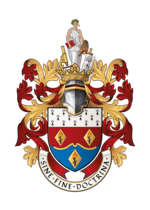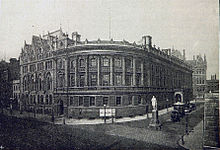
Earl of Longford is a title that has been created twice in the Peerage of Ireland.

Richard Temple, 1st Viscount Cobham was a British soldier and Whig politician. After serving as a junior officer under William III during the Williamite War in Ireland and during the Nine Years' War, he fought under John Churchill, 1st Duke of Marlborough, during the War of the Spanish Succession. During the War of the Quadruple Alliance Temple led a force of 4,000 troops on a raid on the Spanish coastline which captured Vigo and occupied it for ten days before withdrawing. In Parliament he generally supported the Whigs but fell out with Sir Robert Walpole in 1733. He was known for his ownership of and modifications to the estate at Stowe and for serving as a political mentor to the young William Pitt.

Baron Lyttelton is a title that has been created once in Peerage of England and twice in Peerage of Great Britain, both times for members of the Lyttelton family. Since 1889 the title has been a subsidiary title of the viscountcy of Cobham.

Viscount Cobham is a title in the Peerage of Great Britain that was created in 1718. Owing to its special remainder, the title has passed through several families. Since 1889, it has been held by members of the Lyttelton family.

Earl of Hardwicke is a title in the Peerage of Great Britain. It was created in 1754 for Philip Yorke, 1st Baron Hardwicke, Lord High Chancellor of Great Britain from 1737 to 1756. He had already been created Baron Hardwicke, of Hardwicke in the County of Gloucestershire, in 1733, and was made Viscount Royston at the same time as he was given the earldom. These titles were also in the Peerage of Great Britain.
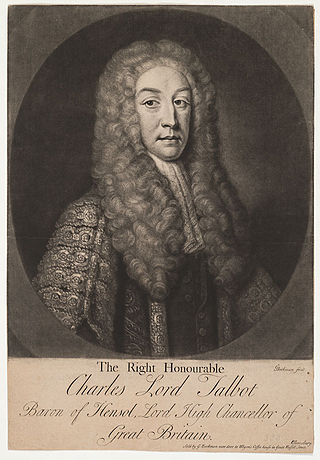
Earl Talbot is a title that has been created twice in the Peerage of Great Britain. This branch of the Talbot family descends from the Hon. Sir Gilbert Talbot, third son of John Talbot, 2nd Earl of Shrewsbury. His great-great-great-grandson, the Right Reverend William Talbot, was Bishop of Oxford, of Salisbury and of Durham. His eldest son Charles Talbot was a prominent lawyer and politician. In 1733, he was raised to the Peerage of Great Britain as Lord Talbot, Baron of Hensol, in the County of Glamorgan, and then served as Lord High Chancellor of Great Britain from 1733 to 1737.
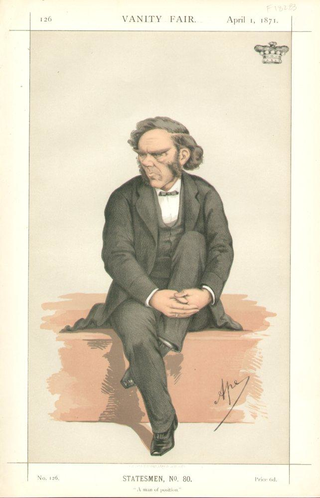
George William Lyttelton, 4th Baron Lyttelton, 4th Baron Westcote, was an English aristocrat and Conservative politician from the Lyttelton family. He was chairman of the Canterbury Association, which encouraged British settlers to move to New Zealand.
This is a list of people who have served as Lord Lieutenant of Worcestershire. Since 1719, all Lord Lieutenants have also been Custos Rotulorum of Worcestershire.
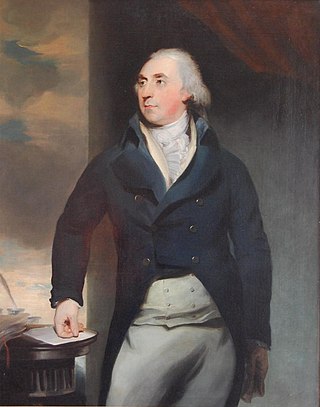
Baron Ponsonby, of Imokilly in County Cork, also referred to as Baron Ponsonby of Imokilly, in the County of Cork, was a title in the Peerage of the United Kingdom. It was created in 1806 for the William Ponsonby, who had previously represented Cork City, Bandonbridge and County Kilkenny in the Irish House of Commons and County Kilkenny in the British House of Commons. A member of the influential Ponsonby family, he was the eldest son of the Honourable John Ponsonby, second son of Brabazon Ponsonby, 1st Earl of Bessborough. His son, the second Baron, was a prominent diplomat and notably served as Ambassador to the Ottoman Empire and Austria. In 1839 he was created Viscount Ponsonby, of Imokilly in the County of Cork, in the Peerage of the United Kingdom. He was childless and the viscountcy became extinct on his death in 1855. He was succeeded in the barony by his nephew, the third Baron. He was the posthumous son of the Honourable Sir William Ponsonby, second son of the first Baron. Lord Ponsonby died childless and was succeeded by his first cousin, the fourth Baron. He was the son of the Right Reverend the Honourable Richard Ponsonby, third son of the first Baron. He died unmarried in 1866 when the barony became extinct.

John Gilbert Talbot, was a British Conservative Party politician.
The royal households of the United Kingdom consist of royal officials and the supporting staff of the British royal family, as well as the royal household which supports the sovereign. Each member of the royal family who undertakes public duties has their own separate household.
Lyttelton is a surname. Notable people with the surname include:
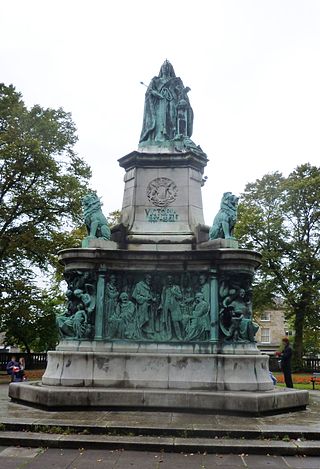
The Queen Victoria Memorial in Lancaster, Lancashire, England, is a Grade II* listed building. It stands in the centre of Dalton Square, Lancaster facing Lancaster Town Hall. It was erected in 1906, being commissioned and paid for by James Williamson, 1st Baron Ashton.

The Lyttelton family is a British aristocratic family. Over time, several members of the Lyttelton family were made knights, baronets and peers. Hereditary titles held by the Lyttelton family include the viscountcies of Cobham and Chandos, as well as the Lyttelton barony and Lyttelton baronetcy. Several other members of the family have also risen to prominence, particularly in the field of cricket.

Apollo University Lodge No 357 is a Masonic Lodge based at the University of Oxford aimed at past and present members of the university. It was consecrated in 1819, and its members have met continuously since then.
